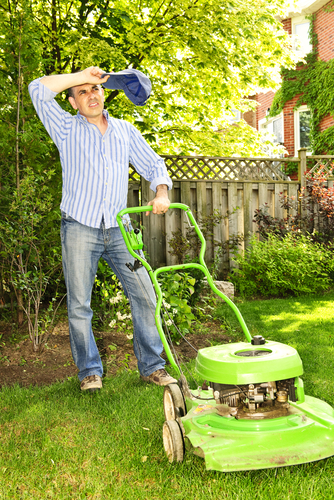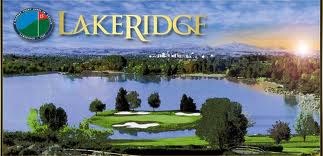Key Takeaways
Optimal lawn care timing:- Immediate Mowing: Mowing right after fertilizing is discouraged to prevent nutrient loss.
- Waiting Period: A waiting period allows fertilizer to be absorbed, varying by type—hours for liquid, days for granular.
- Consequences of Early Mowing: Early mowing can lead to nutrient waste and uneven grass growth.
Having a lush green lawn at the front and back of your house is the dream of many people. It looks good, it adds a little nature to the home environment, and it provides you with a soft surface on which to relax, play, or spend some outdoor time. But a lawn isn't going to grow or maintain itself.
The truth is that having a beautiful lawn of green grass takes time and effort, and you have to regularly maintain it and ensure that it has everything it needs so that it grows healthy. If not, the grass will start to struggle, and the lawn will look more like a horror movie than a picture-perfect dream.
One of the main parts of lawn care and maintenance is fertilizing. Fertilizer can feed your grass extra nutrients, boost it up, ensure that it grows as healthy as possible, and looks its best.
There are fertilizers designed for different types of grass and different specific needs, and they are the key ingredient to a healthy lawn. That being said, you must use fertilizer in the right way, following the rules of application, or else things will go wrong.
One of the things that people struggle with the most is knowing whether they can mow the lawn right after they have fertilized it or whether they should wait a certain amount of time. What is the answer? We're going to guide you through everything you need to know on this matter! Keep reading, and you'll find out.
Can you mow the lawn straight after applying fertilizer?
The answer is no. Cutting the grass after fertilizing is not a good idea.
Arguably, it could depend on the type of fertilizer that you are using. And, indeed, you should always read the instructions for applying the fertilizer and follow any specific rules listed on the fertilizer's label above anything else.
But as a general rule, you should never mow the lawn right after having fertilized, as you need to allow for a certain amount of time before it is safe to do so.
If you think about it, the reason for not mowing makes sense. When you apply fertilizer, it will take a little while for the product to take effect and do what it's supposed to do, so why would you instantly start doing something else to the lawn?
You've just newly applied nutrients, essentially feeding your lawn a delicious meal. Let it digest before doing anything else!
But the exact reason is that if you mow the lawn right after fertilizing it, you have a high chance of accidentally getting rid of said fertilizer and ruining the whole purpose of fertilizing it.
Without waiting for the right amount of time, the grass will not have had a chance to properly absorb the fertilizing product, meaning it will still be on the surface. And when you mow, you will be removing that top surface of grass, which contains the fertilizer. So basically, you will be removing the fertilizer after laying it down, rendering the whole thing useless!
How long should you wait to mow the lawn after applying fertilizer?
Okay, so if you mow the lawn right after having fertilized, you will essentially be removing most of the fertilizer, meaning it won't help the grass grow. But then, how long do you have to wait before it's okay to mow the lawn?
The first thing you need to check is the specifications of the fertilizer you are using. As a general rule, fertilizers will come with a label of information and some instructions or guidance.
You need to check how long it takes for the fertilizer to be absorbed by the grass or soil, as once the grass/soil has absorbed it, there will be no danger of you accidentally removing it.
That being said, if your fertilizer isn't entirely clear on the matter, or you're unsure, you can follow the standard waiting times. They differ depending on the type of fertilizer used so we will cover the two main types of fertilizer. Here they are:
Spray or liquid fertilizer:
Spray or liquid fertilizer is applied onto the grass, making it wet, and as it becomes absorbed, the grass dries. So once the grass is completely dry, after the fertilizer has been applied, you can be sure that it has been completely absorbed, and it is safe to mow.
Usually, this will take a couple of hours, depending on the specific fertilizer. You can quickly check by touching the grass and determining whether it is dry or not.
Granular fertilizer:
Granular fertilizer is dry and solid, and it essentially needs to be absorbed into the soil so that the grass can feed off it. It takes a lot longer to be absorbed, so you will have to wait a more extended amount of time before you can mow the lawn.
The standard recommended time you should wait is between 24 to 48 hours (again, check the specific fertilizer in question for further guidance).
Most granular fertilizers also recommend watering the grass to help it absorb the nutrients better, so if you do so, you also need to wait for the grass to be dry. (Mowing wet grass is never a good idea as this can cause damage!)
What happens if you mow the lawn right after fertilizing?
Let's say you forget to check the rules, and you're in a hurry, and you make the mistake of mowing the lawn right after you have fertilized. What are the consequences?
As we already explained, you are likely to accidentally remove most of the fertilizer from the grass, meaning the grass won't receive those nutrients so you will have wasted the fertilizer. But there are other consequences. Here is a list of the main things that will happen:
Grass will not grow healthy or green (due to not having received the nutrients)
The grass may become patchy, as some parts will have received the fertilizer, but others won't
You will have wasted time, money, and effort
Final thoughts:
In conclusion, you should not mow the lawn straight after fertilizing, as you need to allow for a certain amount of time in which the grass absorbs the nutrients. If you mow the lawn before your grass has absorbed the fertilizer, you will have wasted the fertilizer as it will be mostly removed through the process of mowing.
Instead, you need to wait for a couple of hours (in the case of liquid fertilizer) or between 24 and 48 hours (in the case of granular fertilizer) before you can mow the lawn.
Cory's Lawn Service is a trusted team of professionals that offers lawn care services in Reno, Sparks, and nearby areas. Contact us today to learn more about our lawn care services!

















